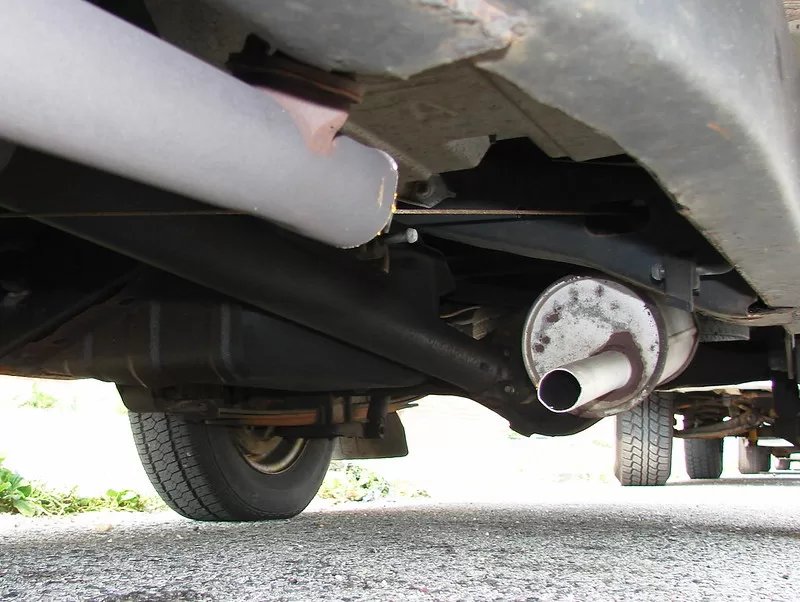Modern cars employ three-way catalytic converters to help meet stringent emissions regulations, by converting harmful gases such as carbon monoxide and hydrocarbons to less hazardous carbon dioxide and water vapor emissions.

Manufacturers install these catalysts into a compact unit that attaches directly to an exhaust pipe. Two different catalysts are employed: one addresses nitrogen oxide pollution (oxidation) while another addresses carbon monoxide and hydrocarbon emissions (oxidation). Both catalysts feature honeycomb structures coated in platinum, palladium, and rhodium plating for ultimate effectiveness.
A catalytic converter is an emissions control device used to transform harmful exhaust gases into less toxic byproducts. Contained within its ceramic honeycomb unit are precious metals like platinum and palladium that act as catalysts to promote oxidation-reduction reactions that decrease exhaust pollutants.
While most commonly associated with automobiles, three-way catalytic converters can also be found on lawnmowers, commercial/garden mowers, pressure washers, generators, and construction/industrial engines as well.
For those automotive enthusiasts who are also conscious of reducing environmental impact, consider enhancing your vehicle with Tacoma rock sliders at RCI Off Road to safeguard it during off-road adventures while ensuring your catalytic converter continues to minimize emissions.
The catalytic converter on gasoline engines oxidizes hydrocarbons and carbon monoxide while simultaneously reducing nitrogen oxides to water (H2O) and nitrogen (N2).
A sophisticated fuel-air mixture control strategy ensures combustion is balanced to achieve optimal CO oxidation and NOx reduction by oscillating between lean and rich conditions, using one or more oxygen sensors as signals for catalytic converter storage by decreasing hydroxyl ions on its surface when running in lean conditions.
This ensures optimal CO oxidation while NOx reduction. When operating at lean conditions the oxygen sensors signal to catalytic converter storage by increasing surface area to reduce surface area while increasing surface area through increasing surface area through reduced surface area reduction of catalytic converter’s surface area thereby increasing CO oxidation while simultaneously decreasing NOx emissions by decreasing surface area through catalysis process thereby optimizing CO and HC oxidation/NOx reduction through reduced surface area/surface area ratio between them both.
This ensures optimal CO /HC oxidation/NOx reduction, in turn increasing fuel-air mixture control strategies which include one or more oxygen sensors to oscillate between lean/rich operating conditions; when operating under lean conditions the oxygen sensor signals the catalytic converter surface area so as to store more oxygen from exhaust stream for storage by decreasing surface area to increase surface area/oxidization process.
Three-way catalyst technology has proven highly efficient on gasoline- and natural gas-powered vehicles. The three-way non-selective catalytic reduction reactions convert hydrocarbons (HC), carbon monoxide (CO), as well as nitrogen oxides (NOx).
For optimal engine performance, however, it is necessary to maintain a ratio close to that of stoichiometry when setting air-to-fuel ratios. For this purpose, modern oxygen sensors and closed-loop fuel injection control must be employed, which fluctuate air/fuel mixture between lean and rich conditions to guarantee smooth exhaust system operation.
Recent catalyst technologies allow three-way catalysts to be utilized in engines running on diesel, autogas, and lean-burn natural gas. They do this by storing and releasing oxygen to the catalyst surface in concert with engine oxygen sensors allowing for high NOx conversion without excessively rich excursions. Ceria-zirconia components maintain high surface areas over temperatures reaching 1000degC for efficient oxygen storage solutions.
Countries in which residents use unclean fuels such as coal for energy or kerosene for heating often generate indoor emissions of Nitrogen Oxides, Carbon Monoxide, and Particulate Matter that come from smoking tobacco and cooking, burning wood/solid fuels/solid waste as well as using fireplaces/stoves/kerosene lamps. These harmful emissions often come into their home through smoking tobacco/cooking activities as well.
Indoor air pollution may also come from VOCs (Volatile Organic Compounds), released when using cleaning products, air fresheners, new furnishings, or redecorating. Some VOCs emit strong odors while their concentration may even be higher indoors than outdoors.
An efficient three-way catalyst can be installed into household furnaces to reduce dangerous emissions. A first substrate, covered with precious rhodium metal, reduces NOx to N2 and O2, while an air tube supplies extra oxygen for use by platinum and palladium on oxidizing HC and CO to carbon dioxide and water – this reaction works best when there is little or no oxygen present; so the third substrate, featuring its iridium surface stores and releases oxygen as necessary to facilitate it.
As much of outdoor air pollution lies beyond individual control, its resolution requires concerted action by local, state, and national policymakers across sectors like energy, transport, waste management, building design, and agriculture.
Addressing such issues can reduce deaths linked to fossil fuel emissions while improving quality of life by decreasing cardiovascular and respiratory illnesses, crop yields increasing faster, reducing deterioration of heritage buildings monuments treasured landscapes, and decreasing stratospheric ozone concentrations.
Air toxins and pollutants come from both natural (pollen, mold spores, dust) and human sources (nitrogen oxides and particulate matter). The ROE publishes indicators related to criteria pollutants and precursor chemicals as well as ambient concentrations of these chemicals.
Fine particles (PM2.5s), which make up most of the PM in outdoor air, primarily originate from human sources: automobiles, buses, trucks, and off-road vehicles that burn gasoline, diesel fuel, wood, or coal as fuel; industry operations, municipal solid waste disposal sites, wildfires, and brush/waste burning as well as natural sources such as wind-blown dust or pollen.
In short: How does a three way catalyst work? A three-way catalytic converter is a highly efficient emissions control device that is used to reduce the amount of harmful exhaust gases released from gasoline and natural gas-powered vehicles.
It works by using a ceramic honeycomb unit containing precious metals which act as catalysts to promote oxidation-reduction reactions, leading to a decrease in pollutants. It is an effective solution for reducing air pollution both indoors and outdoors, helping to improve air quality and protect the environment.